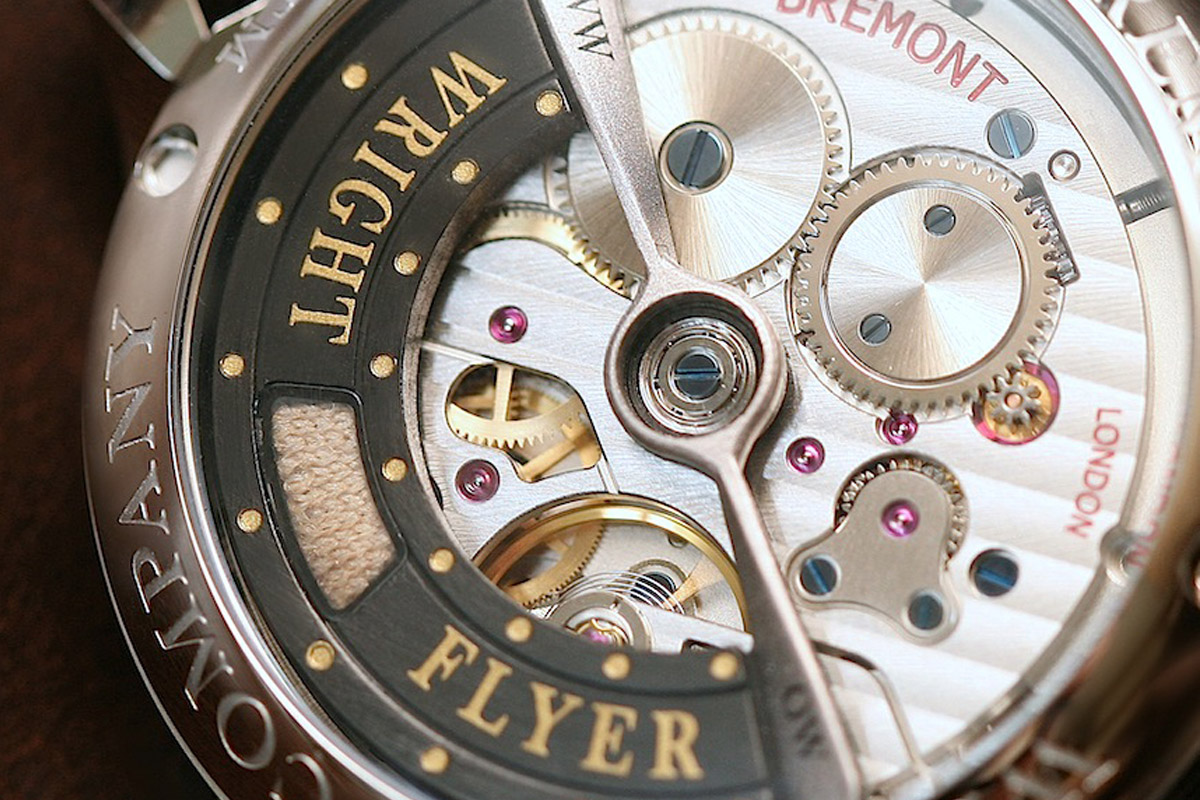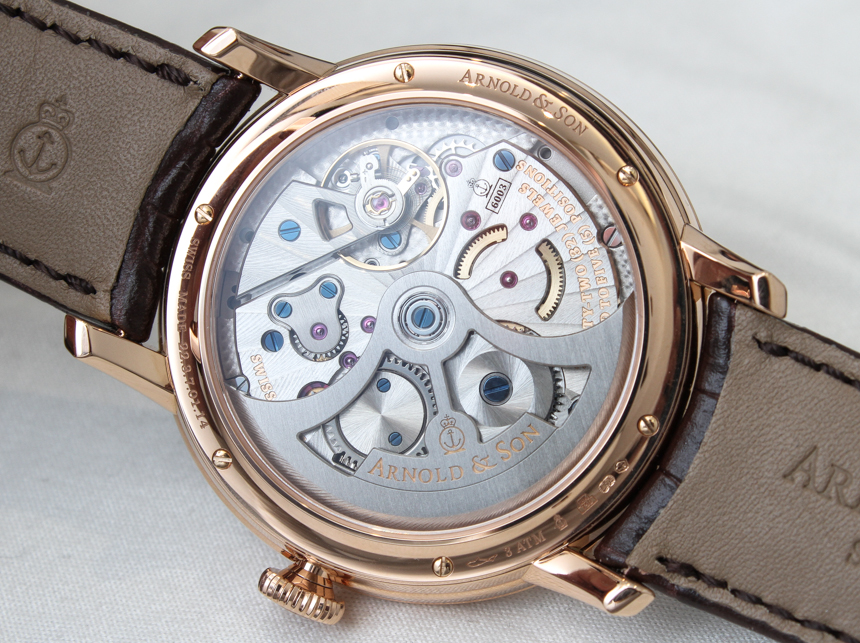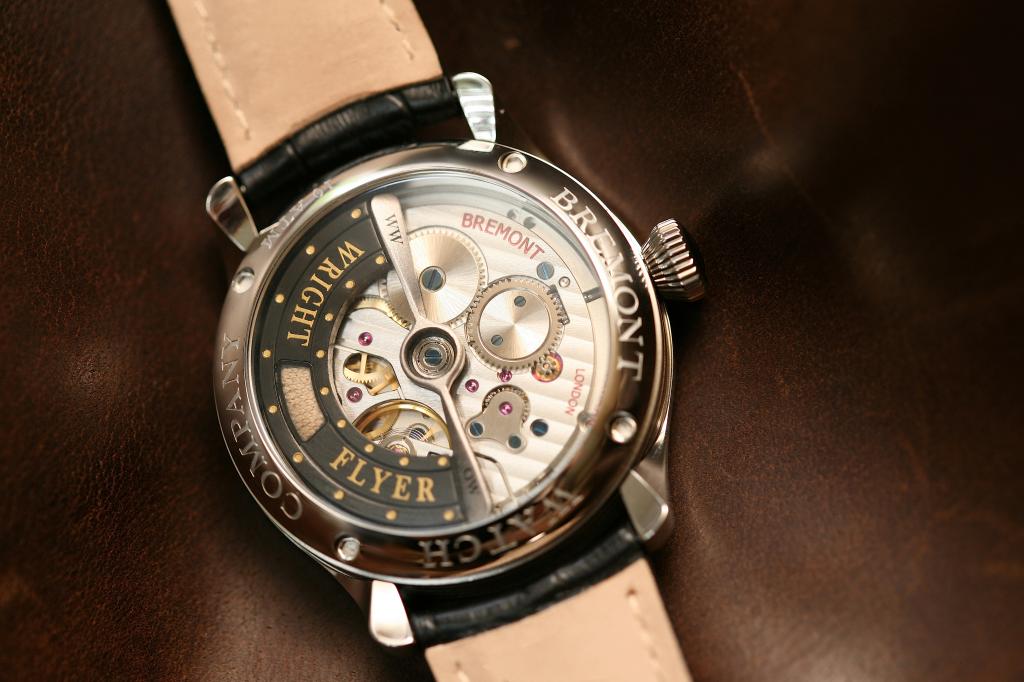Bremont Wright Flyer – A Story of bad communication about an ‘in-house’ movement – UPDATE: FORMAL STATEMENT

“Learn from your mistakes” – and from those made by your competitors – should have been in Bremont’s handbook. However it wasn’t. Remerber in 2009, TAG Heuer’s Calibre 1887 created huge discussions after its release. What TAG Heuer claimed to be an in-house movement was in fact based on a Seiko ebauche, that was modified by TAG Heuer. No big deal in terms of product or quality (lots of brands use externally sourced movements) but a massive loss of credibility and bad communication. You thought the lesson was imprinted in every brand’s mind. Wrong! Bremont made the same mistake with its new Wright Flyer Limited Edition. – UPDATED WITH FORMAL STATEMENT FROM BREMONT –
The Bremont Wright Flyer

Bremont is a UK-based watch brand specialized in chronometers inspired by aviation. If you’ve been reading Monochrome for a longer time, you would have seen our coverage of their chronometers and the review we did of the Supermarine 500.
Usually, the brand relies on externally sourced movements from ETA and the likes, to power its watches. But a few days ago, they came with a brand new and exciting watch, a limited edition inspired by the Wright Brothers and the world’s very first airplane. A first distinctive element of the watch is the rotor that includes a small bite of the fabric used on the wings of the 1903 Wright Flyer. The second and main interest is the movement used in this watch.

For the first time, the brand claimed to use an in-house movement, designed and developed in their own manufacture in Britain. From the official press release, we can read “Many of its constituent parts have also been crafted at the company’s workshops in Henley- on-Thames“. This movement has a 33.4mm diameter, a self-winding capacity, 50+ hours of power reserve and 25 jewels. From the official photos, we can see a nice finish with Geneva Stripes, bevelled angles on the bridges and a rotor that resemble an airplane’s propeller.

The Bremont Wright Flyer Limited Edition presents a 43mm case with a vintage pilot-style design. The watch is available in 3 editions: stainless steel with black dial (limited to 300 pieces), pink gold with white dial (limited to 100 pieces) and white gold with white dial (limited to 50 pieces). At first sight this is quite a nice watch from Bremont and a great step for the brand that presents its first in-house movement. But this is just the visible part of the iceberg.
What went wrong?
Brands, be aware that some potential clients and collectors know more than all of us about pretty much everything linked to watchmaking, specifications and brands’ history. When our colleagues from Hodinkee published the first story about the Bremont Wright Flyer, some of the readers questioned the ‘in-house’ qualification given to the movement. On forums and other websites people also noticed that something was wrong with this movement. After a closer look, it was clear that Bremont’s in-house movement was based on a La Joux-Perret calibre.

La Joux-Perret is a renown manufacture based at La Chaux-de-Fond (Switzerland) that creates movements for several brands, like for example Arnold & Son. Looking at the shape of the bridges and the tmovement’s layout, the parentage between Bremont’s movement and the Calibre 6003 from Arnold & Son is quite obvious. Even if Bremont’s movement has been modified, it is not designed and developed entirely by them. Yes, the brand’s name is engraved in the movement’s bridges and the rotor is custom-made for this movement, but the base was developed with La Joux-Perret.
ABlogToWatch had a conversation with Bremont that admitted having work WITH La Joux-Perret in order to develop a unique movement. So the base (gear train, automatic winding mechanics (except rotor) and main spring barrels) is identical to Arnold and Son’s movement. On the Arnold & Son DSTB it features an off-centre display of the hours and minutes and a dead-beat second module. On the Bremont the hour and minute hand are positioned centrally and there’s an off-centre small seconds sub dial.

What is the issue here? In terms of watchmaking or quality, we can’t blame brands that for using externally sourced movements or developing movement with an external partner. Especially not when talking about La Joux-Perret! Developing and manufacturing an entire movement is a complex, long and very expensive process (think: years and millions). In a statement Bremont now says that the movement was developed by Bremont AND La Joux-Perret (the two companies have a long-term relationship) and that some parts are bought from La Joux-Perret and that some others are manufactured by Bremont.
As the Brits would say, they “cocked up.” Massively! On top of that a slow response and (again) too many vague statements, and the lack of clarity. We would applaud it, if Bremont could clearly state who did what. Once again, we are not saying the movement is no good. We actually believe this could well be a very nice movement and honestly, we do like the looks of Bremont’s new Wright Flyer and the by Bremont AND La Joux-Perret “mutually designed” calibre BWC/01.
PS. the retail price is not announced yet, but we’ll keep you posted
Bremont’s formal statement:
We can confirm that we have worked with LJP (our long term partner) in close collaboration between our technical teams in order to achieve Bremont’s first exclusive movement (so it is not a ‘modification’). This has been a massive development for Bremont and working on a project such as this we wanted to make a reliable movement where we could machine some key components in the UK. We are investing a lot of money in the UK to be able to do this and are proud of our achievements. More specifics below:
– the bridges etc. are all specific to the BWC/01 with an amazingly high quality of finish.
– the overall look from the back-side is somewhat similar than another exclusive movement produced by LJP because of the use of the same gear train and automatic system which we could not produce in the UK. So, quite naturally there is a relatively strong resemblance. However the design of the movements differ in many details.
– the dial side of the movement is totally different from the LJP movement. This clearly shows that Bremont’s movement is exclusive and only used by Bremont.
– the Bremont movement has a different diameter and number of jewels.
– the click spring is different.
– the base version of the Bremont movement has a date system.
Bremont also gave the formal pricing:
- £17,950 for the stainless steel
- £27,950 for the rose gold
- £30,950 for the white gold
More info: www.bremont.com




6 responses
Hi,
I think the world of movement manufacturing is much more complex than most people think. This is mainly because the “in-house” hype is pretty new (and unnatural) in the industry. Additionally, the word “in-house” is not clearly defined. Historically it was not a shame at all to NOT produce in-house, on the contrary. Some of the best and biggest brands in the industry never produced any of their movements themselves. For instance Heuer and Breitling never produced any in-house (wristwatch) movement up to 1969 when they launch an automatic chronograph movement produced and developed TOGETHER! (and with the help of Dubois Depraz and Hamilton-Büren). Nonetheless, they were the biggest chronograph producers of their time. The most prestigious brands like PP, VC and AP have all been (and some still are today) clients/buying movements from JLC. PP even bought its chronograph ébauches (raw movements) first from Valjoux (VZ) and later on from Lemania. These movements where often finished, modified and/or assembled by the brands. Rolex has also always used (modified) Valjoux chronograph movements (later Zenith El Primero) and only presented its own chronograph movement in 2000. The industry has always been sharing/selling ébauches and parts (wheel, plates, bridges, hair springs, etc.) to each other. These ébauches were sometimes more (PP) or less (Heuer, Breitling) modified, decorated, assembled, etc. by the buying brands. Therefore it is not always easy to say when a movement becomes proprietary (in-house) and when it is not. There are 100 shades of grey in-between .
Regarding Arnold & Son: It is also interesting to note that Arnold&Son and La Joux-Perret are basically one and the same company. Therefore Arnold&Son is technically speaking not a client of La Joux-Perret as the latter is its own movement producer. It is like Breguet which owns its movement producer called Nouvelle Lemania or Blancpain which also owns its movement producer called F. Piguet. As all these brands do own their movement producer they can rightfully claim to be manufactures/in-house producers. Both Lemania and F. Piguet nonetheless also sell movements to third parties, for instance you can find a F. Piguet movement in an AP or VC watch or a Lemania in an Omega (Speedmaster hand-wound). The reason why they probably kept the name Lemania and F. Piguet is because Breguet would not like someone saying that there is a “Breguet” movement in the Speedmaster or AP saying that they actually use a “Blancpain” chronograph movement in their RO, etc… as these companies are all competitors.
Just my two cents.
Best,
Paul
Good stuff!
I do agree with you Paul, this is also something that we mentioned in the article about the TAG Heuer Calibre 1887. The main focus here is that they should not have called it in-house and suggest that the vast majority of parts have been manufactured in the UK. If they had been open and honest about everything, they would have been praised for the new watch and movement.
I am a little confused, the official press release quoted at the start of this article says:
“Many of its constituent parts have also been crafted at the company’s workshops in Henley- on-Thames“
So we immediately know that not all of it is made in Britain. From the Telegraph’s coverage of the release:
“Designed in conjunction with Swiss specialists, La Joux-Perret, the BWC/01 has sufficient British content, in terms of both development and components, for Bremont to be confident putting “London” on the mainplate.”
http://www.telegraph.co.uk/luxury/watches/41355/bremont-wright-flyer-historical-double.html
So we know they had a design partner and have told the press all about it.
I am finding other press coverage of the release and there always seems to be the mention of LJP, even Novirox.
All a bit strange really.
The first press release did not mention the cooperation with LJP, it was only after the whirlwind started on the internet, that a new “statement” was being released. We’ve seen several articles being published soon after that second damage-control press release. That first press release landed in my mailbox with this sentence: “Bremont is thrilled to announce its 2014 limited edition which incorporates original material from the 1903 Wright Flyer as well as housing its first in-house movement.”
Hope this helps
Interesting. I’ve been over at the TZ-UK forums following ‘Wright Flyer’s’ expose and what seems to be early press material from Bremont. The date is 23 July on one post containing a promo photo and it states that not everything is Bremont made. The Telegraph article is from the ‘launch’ on the 28th (same as this article), and mentions the partnership. What is the date on the material you received? Can you/have you posted it? Apologies if you have already. I assume that the second release you are refering to is the one in this article? What date was that released?
Some of it is getting very murky in that the ‘expose’ references material on ‘Wright Flyer’s’ Facebook, which has apparently been deleted. And there even seems to be doubt that the LJP 6901 calibre even exists.
Not at the WIS level myself, but it seems the definitions of ‘in-house’ seem pretty subjective as well, which adds to my confusion. With the definition that a lot of people have adopted for this debate, the only real ‘in-house’ manufacturers appear to be Seiko (down to the lubricant) and maybe Patek Phillipe.
I guess a lot of my confusion is also trying to establish a time-line. The earliest references that I can find are as I mentioned above. So the Telegraph article could have been edited (it is dated five days after the official launch date given on Bremont’s site) to included damage-control information? It uses ‘proprietary’ and ‘in-house’ inter-changeably, I am not sure they mean the same thing.